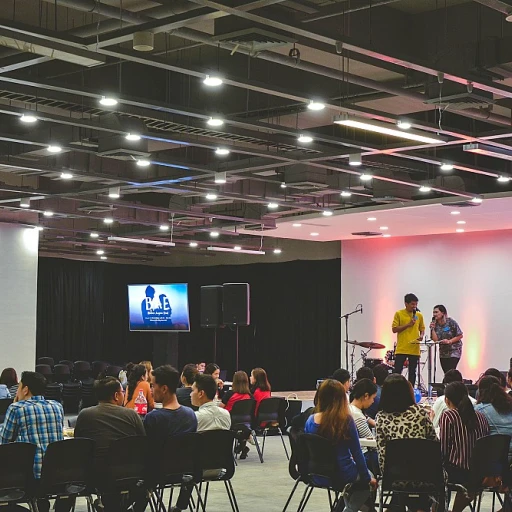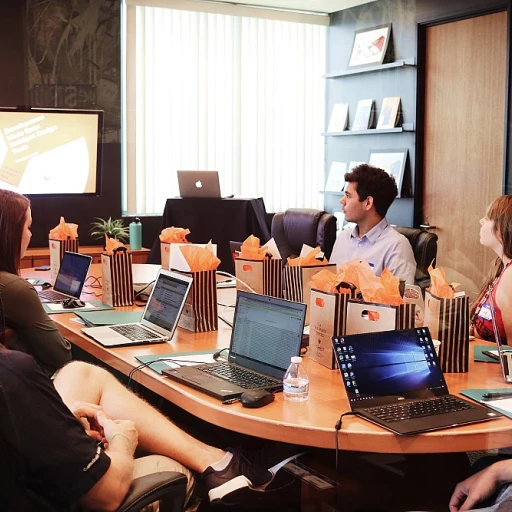
The Changing Dynamics of Talent Attraction
Adapting to New Realities in Talent Acquisition
In today's ever-evolving job market, the dynamics of talent attraction are shifting rapidly. Companies are faced with the challenge of navigating an increasingly complex recruitment landscape. To attract and retain top talent, organizations must adapt and innovate their strategies to keep pace with these changes.
One of the significant changes is the growing demand for remote work and flexible work environments. Employees are prioritizing work-life balance more than ever, and companies that embrace flexible work options are at a competitive advantage in attracting potential candidates. This shift reflects a broader trend towards valuing employee engagement and creating a supportive company culture that aligns with employees' values and needs.
Moreover, the emphasis on building a strong employer brand is paramount. A company's employer branding can deeply influence candidates' decision-making processes, making it essential for organizations to focus on portraying an authentic and engaging work culture. A well-crafted attraction strategy that highlights the organization's values, mission, and work environment can significantly enhance talent acquisition efforts.
In addition to promoting a positive image, companies need to be proactive in leveraging digital platforms, including social media, to reach prospective employees. Innovative skill development strategies for the future of work can be a valuable resource for organizations seeking to stay ahead in this competitive space. By adopting a forward-thinking approach, businesses can ensure they remain attractive to job seekers and maintain a strong recruitment process.
Leveraging Technology in Talent Attraction
Embracing Cutting-Edge Tools for Talent Attraction
In our fast-paced world, leveraging technology in the talent attraction process is no longer optional—it's essential. Companies are increasingly using advanced tools and platforms to attract and retain candidates, ensuring a seamless experience throughout the recruitment process. Employers are tapping into social media to broaden their reach. With platforms like LinkedIn and Twitter, businesses get a unique opportunity to communicate their brand and culture, engaging both job seekers and potential candidates. This digital presence is crucial for attracting top talent in a competitive market. Beyond social media, organizations are embracing AI-driven solutions and data analytics to enhance their talent acquisition strategies. These technologies help employers identify qualified candidates more efficiently, predict job success, and ensure diverse and inclusive hiring practices. The use of virtual reality (VR) and augmented reality (AR) is also on the rise, giving potential employees a realistic glimpse into the work environment and culture of a company. This immersive experience helps candidates assess whether they align with the company culture and employer brand, leading to more engaged employees in the long term. Moreover, automated processes reduce the time and cost involved in recruitment, allowing companies to direct their resources towards improving employee engagement and work-life balance. As companies strive to stay ahead in the talent race, adopting these innovative strategies not only aids in attracting talent but also helps retain it. For insights into the essential skills required for these futuristic roles, read more about tomorrow's workplace skills.The Human Element: Balancing Technology and Personal Touch
Finding Harmony Between Technology and Human Touch
In the evolving landscape of talent attraction, striking the right balance between technology and the human touch has become crucial. While digital advancements have equipped companies with tools to streamline the recruitment process, the importance of maintaining a personal connection cannot be overstressed.
The influx of advanced technology has undeniably elevated the talent acquisition strategy. Automated platforms and social media analytics have made it easier to identify potential candidates and assess top talent. AI-driven tools can efficiently parse through resumes and match skills with job requirements, optimizing how employers identify the right fit for their organization. However, integrating these technologies must not overshadow the necessity of fostering employee engagement through meaningful interactions.
The success of attracting and retaining employees who align with the company’s mission often hinges on creating a positive work environment and corporate culture. A candidate's impression of an employer brand is not solely shaped by digital touchpoints. Instead, it also relies on personal interactions during interviews and authentic communication on work life balance, remote work opportunities, or company culture. Such genuine connections can greatly influence whether job seekers perceive a company as their future work home.
Balancing technology alongside the personal aspect of recruitment also means investing in training employees to enhance their interaction skills. For sustained talent attraction and retention, it is beneficial for an organization to empower its HR teams with tools that allow for both efficient attraction and genuine engagement. Platforms that facilitate subtasks between the digital and human elements can further enhance this balance. Dive deeper into integrating technology and personal touch here.
Diversity and Inclusion as Key Drivers
Diversity and Inclusion Play a Pivotal Role
The landscape of talent acquisition is swiftly transforming, and companies can't afford to overlook the significance of diversity and inclusion. As organizations strive to attract top talent, a diverse workforce isn't merely an aspirational goal—it's a strategic imperative. An inclusive culture draws a wide array of candidates and allows companies to reap the benefits of different perspectives and ideas, which can drive innovation and improve employee engagement.
Ensuring diversity in the recruitment process is more than just filling quotas or making sure the employee roster reflects various backgrounds. It is about creating a culture where employees from all walks of life feel valued, welcome, and encouraged to contribute. When companies effectively implement diversity strategies, they can significantly enhance their employer brand, which in turn makes them more attractive to job seekers and potential candidates.
Furthermore, embracing diversity and inclusion as part of the company culture can help in employee retention. Employees are more likely to remain with a company where they feel their unique contributions are recognized and rewarded. This not only fosters a positive work environment but also aids in the company's long-term strategy by ensuring a stable and engaged workforce.
Organizations are increasingly utilizing various technologies to attract and retain talent by focusing on diversity. Whether through analytics that identify and eliminate biases in recruitment processes or platforms that improve how companies communicate their inclusive values via social media, the role of technology in supporting diversity and inclusion strategies is undeniable. However, it is essential not to overlook the human element in these efforts. Candidates and employees alike need personal interactions that reinforce company commitments to a balanced work-life integration and a forward-thinking culture.
Building a Strong Employer Brand
Enhancing Employer Branding Through Strategic Initiatives
In today's competitive job market, building a strong employer brand is a pivotal component of talent attraction. A compelling employer brand not only helps in attracting top talent but also plays a crucial role in retaining employees who embody the company culture. By developing a clear understanding of the organization's values, mission, and work environment, employers can effectively convey what makes them a desirable place to work. A successful employer branding strategy involves highlighting aspects such as work life balance and employee engagement. Promoting an inclusive culture where diversity is celebrated can significantly influence potential candidates, as job seekers increasingly prioritize workplaces where they feel they belong. Integrating technology into this process can also enhance outreach efforts. For instance, using social media channels to share authentic insights into daily company life can humanize the brand and build trust among prospective talent. Moreover, companies that provide opportunities for remote work and flexible schedules are at an advantage, as these options are highly valued by employees searching for a better work life balance. By committing to these practices, organizations not only attract retain talent but also demonstrate forward-thinking approaches that align with the evolving expectations of the workforce. An employer's branding efforts do not end once a candidate is hired. The recruitment process should seamlessly translate into an engaging work experience that fulfills the promises made during the attraction phase. Consistently nurturing an engaged workforce ensures that employees become brand advocates, further enhancing the company's appeal to future talent. Therefore, companies investing in a robust employer branding strategy today are more likely to future-proof their talent acquisition efforts for the long term. Cultivating a reputation as a desirable employer positions organizations to attract and retain the best candidates in an ever-changing work environment.Future-Proofing Talent Attraction Strategies
Ensuring Resilience in Talent Attraction Approaches
In today's ever-evolving work environment, creating robust talent attraction strategies is more crucial than ever. Companies must innovate and adapt to stay competitive and effectively appeal to job seekers. An effective strategy starts by acknowledging the rapid changes in both technology and employee expectations. Organizations need to embrace advancements, such as recruitment software and AI, to streamline their talent acquisition process. However, the human element cannot be ignored; personal interactions remain vital for engaging with potential candidates. Moreover, a strong employer brand can be a powerful tool in attracting top talent. Cultivating a positive, inclusive company culture that prioritizes employee engagement and work-life balance will help companies attract and retain engaged employees. Looking to the future, companies should focus on:- Flexibility and Remote Work: As remote work options become more prevalent, offering flexible work arrangements can be a significant draw for talent. Ensuring that virtual work is supported by effective digital tools is essential.
- Diversity and Inclusion Initiatives: Promoting diverse and inclusive workplace practices not only creates a better work environment but also attracts a broader pool of candidates.
- Continuous Advancement of Skills: Encouraging ongoing skill development and providing opportunities for growth will help companies stay ahead in the changing job market.












